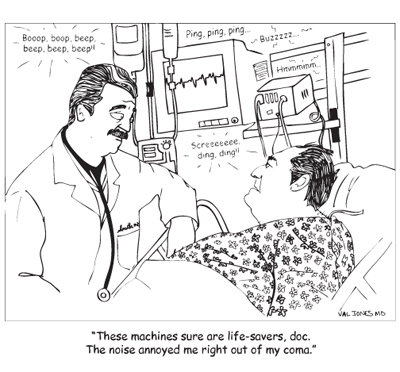September 20th, 2011 by John Mandrola, M.D. in Opinion
No Comments »

Did you know September is AFib awareness month?
As a believer in education as the first, and best treatment of AF, I think it’s great to enhance the public knowledge of this highly-misunderstood disease.
By all means…
Tell people about AF’s risks: stroke and heart failure.
Tell them that their fatigue, poor exercise tolerance and breathlessness might not be old age; it might be AF.
Tell them about the importance of early intervention.
Tell them that obesity, inactivity, sleep disturbances, alcohol, and incessantly worrying about everything makes AF more likely to occur, and to stay.
Tell them that Read more »
*This blog post was originally published at Dr John M*
May 25th, 2010 by CynthiaHainesMD in Better Health Network, Health Tips, Research
1 Comment »

“I never worry about action, but only about inaction.” — Winston Churchill
Winston Churchill was right: Experts are saying sedentary behavior is an epidemic, with the resulting health effects potentially devastating.
Lack of muscular activity is associated with higher incidence of obesity, cardiovascular disease, diabetes and cancer, as well as a heightened risk of death. And this is regardless of one’s level of structured physical exercise, according to the authors of an article published [recently] in the British Journal of Sports Medicine.
The team from Stockholm, Sweden, says that sedentary behavior has become synonymous with lack of exercise, but that this is inaccurate and misleading. Rather, sedentary behavior should be defined as whole body muscular inactivity. Read more »
March 20th, 2010 by Edwin Leap, M.D. in Better Health Network, Humor, Opinion, True Stories
No Comments »


Recently, my wife and I went away for a weekend. I can’t remember the last time we packed our bags and left the children with their grandparents for two whole nights. Frankly, our preference is always to do things with them when we can, because in addition to loving them, we like them! But we decided to seize the moment and take that rare opportunity to go on an extended “date.”
I know that it must have been a while since we had been away, because we couldn’t stop smiling. We laughed and shopped. We ate quiet meals together without negotiating the best restaurant for four children and two adults. We held hands, but no one else was touching us, pulling us in different directions, or asking us to find anything. It was positively, delightfully spooky. Read more »
*This blog post was originally published at edwinleap.com*
February 12th, 2009 by Dr. Val Jones in Humor, True Stories
10 Comments »
I volunteer at Walter Reed Army Medical Center (WRAMC) a half-day per week. I’m inspired by the soldiers in the occupational and physical therapy center, and am continually amazed by their abilities. The other day I watched a soldier with an artificial leg climb a rock wall better than I ever could, and marveled at a man who had both legs amputated above the knee – he was ambulating almost without a limp, and with the help of a straight cane alone.
As I watched these wounded warriors learning how to maximize their functional abilities – I overheard a staff member explain the reason why the Walter Reed hospital building is closing in 2011.
Apparently WRAMC is built on land owned by the District of Columbia. In an effort to subsidize the over-budget subway system, the city purposefully disallowed sufficient parking spaces to be built on the WRAMC site. The idea was to force staff to take the subway to WRAMC. The closest subway is a 20 minute walk from the hospital.
In addition to the limited parking, DC imposes a height restriction on all buildings in the district – they cannot be taller than the Washington monument. Therefore as Walter Reed grew and expanded, they could not add any floors to the hospital, but had to construct additional buildings on campus.
And so, in about three years time, Walter Reed will shut down, moving their remaining staff to the Navy hospital in Bethesda, Maryland where there is plenty of parking and no building height restrictions.
I’m not sure what the total cost of moving the army hospital to the navy center will be, but I’m guessing in the hundreds of millions. How much did the staff complaints about not wanting to walk to work play into all of this? I don’t know, but I’ve seen them drive in as early as 5:30 am to get one of the few parking spots. This attitude is consistent with Americans’ general unwillingness to adopt an active lifestyle, and it’s costing us all so much more than we realize.
It’s possible that laziness dealt the final blow to Walter Reed: a facility created to get people active again after war injuries.
How Ironic.














